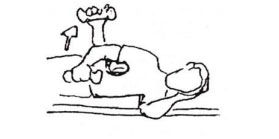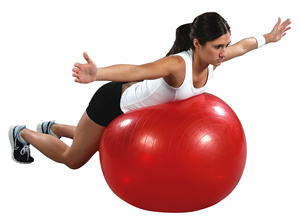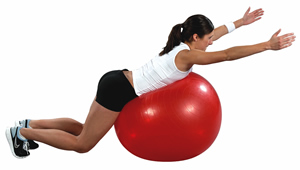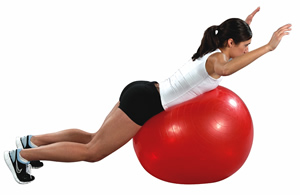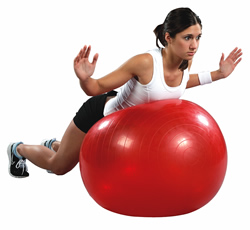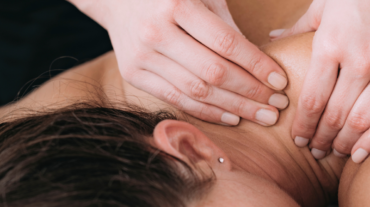Shoulder instability is quite common and can be caused by a number of factors, e.g. genetics, injury, or poor posture. To help relieve pain in your shoulders, or as part of an exercise program to help prevent injury, these exercises are great, and are very simple to learn. Be sure to follow the advice of your health care provider before starting any exercise program.
Side-Lying External Rotation
This exercise will strengthen your rotator cuff muscles while also helping your posterior deltoid muscle.
Using a light dumbbell (or with a very unstable shoulder no weight at all), lie on your side holding the dumbbell in the hand of your upper arm. Position the elbow of your upper arm against your rib cage to help stabilize your shoulder as you perform the exercise (you can put a towel under your upper arm for more comfort).
Simply rotate your arm, carefully raising the weight of it (and the dumbbell if you're using one), and then lower back down. Repeat for 15-20 repetitions, doing 2-3 sets total. Repeat every other day.
Medicine Ball ABC's
Like many exercises, there are several variations to this one, so if you find something that works better for you feel free to adjust to your own comfort level.
The aim of this exercise is to strengthen your deltoids as well as your rotator cuff muscles.
With your arm straight in front of you (or slightly to the side if that is more comfortable), holding a small medicine ball against a wall, spell out the alphabet with the ball.
Note: this exercise can be done against the wall or even in mid-air. You should use a ball of appropriate weight, according to the stability in your shoulder, or start with no weight at all, using only the weight of your hand to draw. As with any exercise, slowly progress to more weight as you get stronger.
Perform this exercise as far into the alphabet as you can get without feeling pain, and repeat every other day.
TYLW Raises
This set of four slightly different exercises helps to strengthen your rotator cuff muscles. Note that they can be done lying prone on the floor, or for added comfort, using an exercise ball. If doing this exercise on the floor, face the ground but raise your head slightly, keeping it aligned with your spine. On an exercise ball, try to keep your spine close to parallel with the floor.
For the T-Raise, form a T with your arms, 90 degrees to your body, thumbs pointed upwards. Raise both your arms 3-5 inches, hold for 3-5 seconds, and then slowly lower back to the starting position. Repeat 8-12 times for 2-3 sets. Do this exercise every other day.
For the Y-Raise, position your arms at a 45 degree angle to your body, and repeat the same pattern as the first raise.
For the L-Raise, bend your arms so that your elbows form 90 degree angles. Follow the same pattern as the first two exercises.
For the W-Raise, bend your arms so that your elbows form 45 degree angles, making a W shape. Follow the same pattern as the other raises.
Other tips for good shoulder health:
- When doing upper body exercises, avoid bringing your shoulder blades together. Instead, imagine bringing your shoulder blades back and down. This may take some time to get used to imagining, but it will greatly help your form and prevent injury.
- Avoid the motion associated with upright rows. This action can harm your rotator cuff muscles, and will compress the muscles in your upper back and shoulders in a decidedly unhealthy way.
- When doing an overhead-press-type exercise, try to make a W-shape with your arms, rather than bringing your arms straight up or bringing your hands together. This too will help you avoid compressing the upper part of your shoulders (i.e. your trapezius muscles).
- If something hurts, stop doing it! It’s that simple.
By Richard Lobbenberg, BSc BHSc DAc
These links may also be helpful:
Shoulder and Upper Back Health to Relieve Pain
Read more Yellow Gazebo articles






